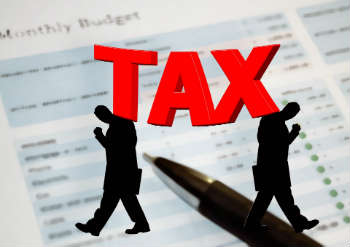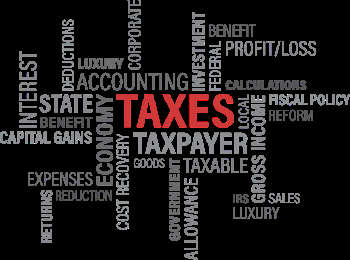Using Income Tax Refunds To Pay For Bankruptcy
What do you use your tax refunds for? A new car, vacation fund or catch-up on bills may be common answers, but for many, this bonanza goes to a more urgent cause – bankruptcy filing. For some families, crushing debt has become a burden too big to bear and bankruptcy offers the only way out. Believe it or not, bankruptcy is expensive, so tax refunds are a natural source of money to fund these legal expenses.
Tax Refunds Becoming A Bankruptcy Payment Source
Many consumers wait for their tax refunds to make large purchases. In America, consumers aren’t big savers, and their refunds can also be the only source of an emergency fund for expenses like bankruptcy. According to a 2015 Federal Reserve report, 46 percent of Americans could not cover an emergency expense of $400. If you are looking at filing for bankruptcy that amount only just covers the costs of filing for bankruptcy.
Filing for Chapter 7 bankruptcy shows a seasonal spike around the time tax refunds start rolling in. According to USA Today, March filings were 26 percent to 34 percent higher than the monthly average for the past four years.
The trend is so prevalent that some attorneys are prepped and ready to go around this time.
The Cost Of Filing For Bankruptcy
Filing fees typically cost about $306, with attorney fees coming in around $1,200. So, on average, consumers pay about $1,500 to escape their debts via Chapter 7 bankruptcy. These figures are due to change depending on which state you are filing your bankruptcy in.
Those costs are on the rise due to a 2005 change in the laws, which makes filing for bankruptcy a little tougher. This impacted attorney fees, with the simplest type, a no-asset Chapter 7, rising in cost by almost 50 percent, as reported by the American Bankruptcy Institute Law Review.
Reasons To File For Bankruptcy
Most people do not plan to file for bankruptcy. It’s only when overwhelming debt becomes a crushing burden that this becomes the least painful of your limited options.
If you are thinking about filing for Chapter 7, here are some things you should consider first:
- If you have undesirable debt that is more than 50 percent of your household income, consider bankruptcy. Undesirable debts include medical bills, loans, and credit card debt.
- If you cannot reasonably pay off your debt in five years, consider Chapter 7.
- Are you unable to save for retirement due to crushing debt?
Chapter 7 debt forgiveness covers credit card debt and medical bills, as well as a host of other bills. Personal bankruptcy under Chapter 7 will not discharge student loans, mortgage or tax debts. A bankruptcy attorney is the best place to start to assess your personal situation.
Your Credit Score & Restoration
Your credit report will reflect a bankruptcy for 10 years. Depending on your payment history, however, your score can rebound by as much as 80 points within six months. This is a small price to pay for families facing foreclosure on their homes or other pivotal debt worries that can be resolved with a successful bankruptcy filing.
To restore your credit after a bankruptcy filing, watch your credit score closely and do everything you can to build credit. You can subscribe to the major credit bureaus (Equifax, TransUnion, and Experian) to monitor your report on a monthly basis, for a small fee. Look for errors, missing information or old information. Also, update your employment and contact information. Do everything you can to show that your record is improving.
One way to rebuild credit is to go to your local bank to apply for a secured credit card. Despite an annual fee of $25 or more,
expect interest rates between 15 to 25 percent, based on your bankruptcy filing. You may also pay an application and processing fee. However, once you use and pay off the card, your scores will improve.
Facing the decision of whether or not to declare bankruptcy is not easy in any season, even with tax refunds to defray the filing costs. However, if you have to make that decision, then think it through all the way to the end so that you understand the long journey back.

